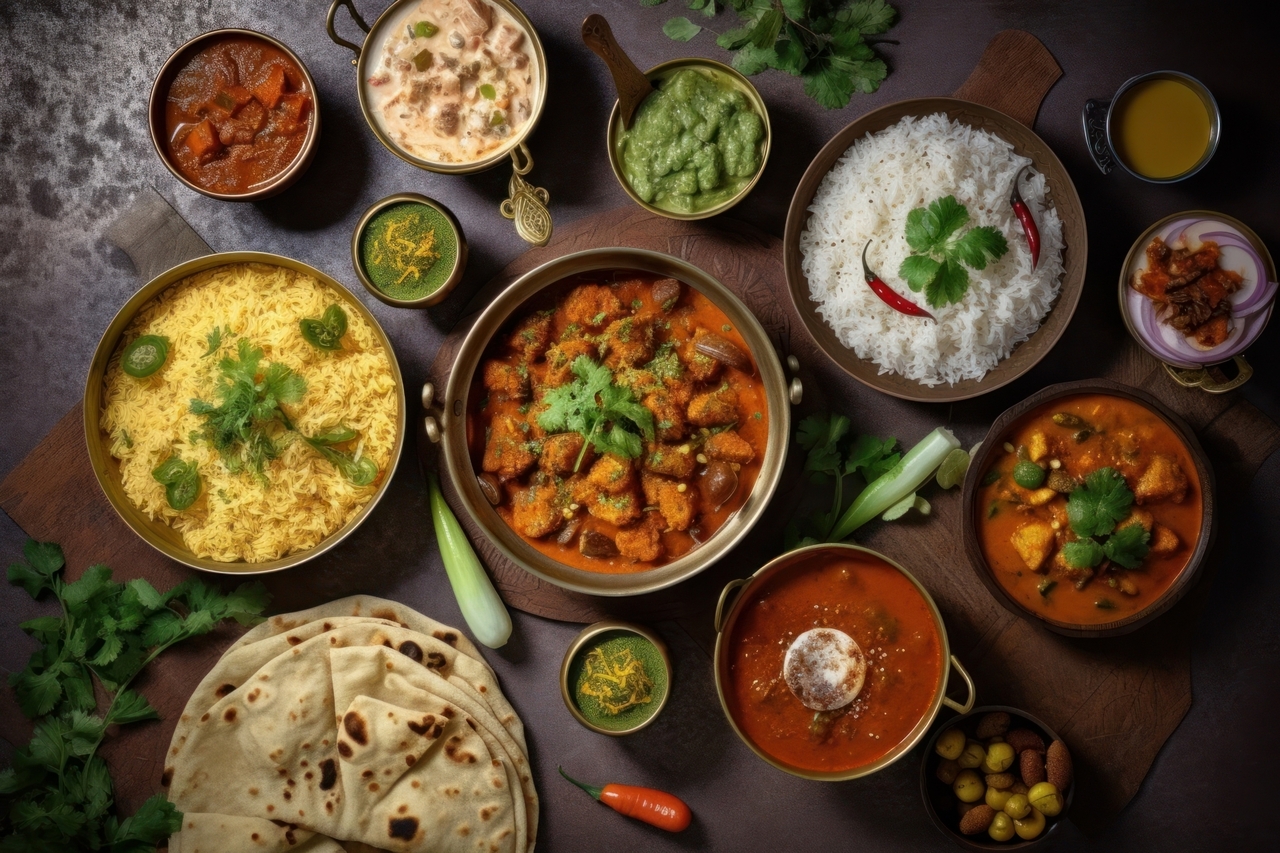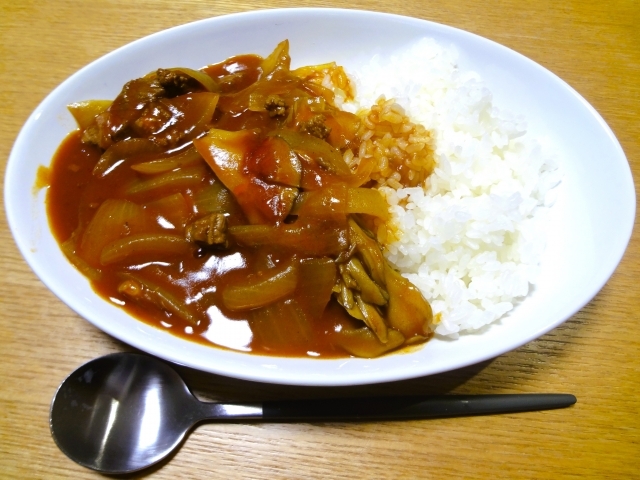MUSUBI: Two Countries, Two Food Cultures

Hello, I am Sabina Maharjan from Nepal. I have been living here in Japan since 2019. When I first came to Japan, I had very little, but one thing I had a lot of was fear. As time passed though I was able to overcome this fear and build up my confidence. I realized that my fear was due to my own language barrier, but also a culinary barrier. I knew nothing of Japanese food culture, but once I came to understand it, the barrier just melted away. Now, I would like to share with you some of my personal experiences of two different countries' food.

Photo by おこめっこ
Curry (Nepal) & Curry (Japan)
At first, it was not so easy to go around and try the different tastes of Japanese food for me. One of the big sticking points was curry. Far from being the friendly reminder of homw I thought it would be, Japanese curry was a shock to me at first.
There are vast differences in Nepalese curry and Japanese curry, although there are also similarities. Rice is the main component. The ingredients used are the same, but the process and use of spices are very different. Not only that, I am also a vegetarian, whereas curry in Japan often contains beef or pork more than it doesn't.
Now I love cooking, and I usually cook various dishes in my kitchen and enjoy sharing with my family and friends. It took some time, but I was eventually able to master Japanese curry as well. I now feel confident in being able to make (and enjoy) both my homegrown kind, and Japan's- at least without meat.
There are vast differences in Nepalese curry and Japanese curry, although there are also similarities. Rice is the main component. The ingredients used are the same, but the process and use of spices are very different. Not only that, I am also a vegetarian, whereas curry in Japan often contains beef or pork more than it doesn't.
Now I love cooking, and I usually cook various dishes in my kitchen and enjoy sharing with my family and friends. It took some time, but I was eventually able to master Japanese curry as well. I now feel confident in being able to make (and enjoy) both my homegrown kind, and Japan's- at least without meat.
WO (Lentil pancakes of Nepal) & Dorayaki (bean pancakes of Japan)
WO or Woh is made from various types of lentils, but the most popular one is made from black lentils (Maas Daal) and green lentils (Moong Daal). This is one of my favorites because it’s healthy and quick to prepare. It is eaten at every festival and occasionally when we invite our guests and relatives to our homes.
You can also enjoy different flavor of Woh by adding somedifferent ingredients like coriander leaves, asparagus, chopped onions, various meats, eggs, chopped green chili peppers, and so on. Plain Woh without any of these ingredients also tastes delicious.
I searched for a Japanese equivalent, and found Dorayaki. I have eaten Dorayaki many times here in Japan. It’s a soft, sweet and healthy Japanese pancake. My kids love to eat it, as do many others. You can buy Dorayaki in all convenience stores, supermarkets and sweet shops. I haven’t tried to cook Dorayaki in my kitchen yet, but I want to some day.
You can also enjoy different flavor of Woh by adding somedifferent ingredients like coriander leaves, asparagus, chopped onions, various meats, eggs, chopped green chili peppers, and so on. Plain Woh without any of these ingredients also tastes delicious.
I searched for a Japanese equivalent, and found Dorayaki. I have eaten Dorayaki many times here in Japan. It’s a soft, sweet and healthy Japanese pancake. My kids love to eat it, as do many others. You can buy Dorayaki in all convenience stores, supermarkets and sweet shops. I haven’t tried to cook Dorayaki in my kitchen yet, but I want to some day.
Tea (in Nepal) and Tea (in Japan)
Tea- a word that is simple, yet conjurs such a friendly feeling to me. When we have guests over, we serve them with tea. Tea is the perfect medium to strike up a conversation. This is true in Nepal, and it is true in Japan too.
For the health-conscious, there are many kinds of teas to choose from. You can have it with cream and suguar, but some say sugar kills the taste of tea and look for alternate herbs and spices. They add spices like cloves, black pepper, cardamom, ginger, bayleaf, cinnamon, etc. We can also add some herbs like basil, mint, saffron, lavender, rose marry, lemon grass, dill, etc.
In Japan when you go to any traditional restaurant and ordera meal, chances are you will be served green tea as well (or at least water). When you go at someone’s house, they will welcome you with some green tea. It’s not only part of the food culture, but also Japanese etiquette.
Green tea is said to have numerous health benefits. It utns far, increases the metabolism, helps lower blood sugar, prevents heart disease, boosts immunity, and more. I personally love drinking green tea because of its health benefits and its taste!
For the health-conscious, there are many kinds of teas to choose from. You can have it with cream and suguar, but some say sugar kills the taste of tea and look for alternate herbs and spices. They add spices like cloves, black pepper, cardamom, ginger, bayleaf, cinnamon, etc. We can also add some herbs like basil, mint, saffron, lavender, rose marry, lemon grass, dill, etc.
In Japan when you go to any traditional restaurant and ordera meal, chances are you will be served green tea as well (or at least water). When you go at someone’s house, they will welcome you with some green tea. It’s not only part of the food culture, but also Japanese etiquette.
Green tea is said to have numerous health benefits. It utns far, increases the metabolism, helps lower blood sugar, prevents heart disease, boosts immunity, and more. I personally love drinking green tea because of its health benefits and its taste!

Photo by リュウキ
Conclusion
Lastly, I want to say that wherever you go, try to understand the nature of the food there. If the eyes are the window to the soul, then the stomach is the doorway to it. When moving to or visiting a new place, try to understand its food culture, and everything else will fall into place from there. Food is the true universal language, and in sampling it, you too will find your fears wash away. As the old Irish proverb goes, "Laughter is the brightest in the place where food is good".
Photo Credits:
Main image: NOREAL
Additional Photos by リュウキ & おこめっこ
All other content (text) created by the original author and © 2023, 2024 MUSUBI by Borderlink
WRITER

Sabina Maharjan
From Nepal
Has experienced Japan for 4 years. This is my 3rd year as an ALT in Japan and 2nd year with Borderlink!
RECOMMENDED
-

My Incredible Journey in Japan
Japan, a country renowned for its captivating mixture of ancient traditions and pioneeringmodernity, has l... -

Ramen Jiro - Noodles of the Gods
Are you a fan of food? Who isn’t, right? Let me put it another way:Do you enjoy thick, scrumptious noodle... -

Countryside Exercise in Japan
Before I came to Japan, I had recently started to become more health-conscious. I was in my late twenties and wa...



